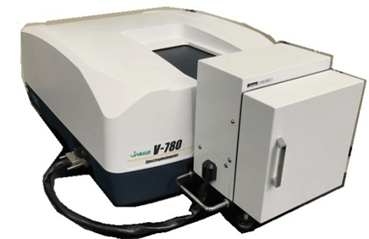Introduction
In recent years, nail products using a photo-curable resin, referred to as gel nails, have been widely used. Gel nails adhere to real nails due to a photo-polymerization reaction that cures colored synthetic resins under ultraviolet or visible light irradiation. In general, a top coat is applied over the color coat for various cosmetic purposes, such as to support decorations such as rhinestones, to make the gel nail last longer, or to create a texture such as gloss on the fingernail surface.
In this study, to investigate gel nails with two different colors, samples with a single color and sample with a clear or matte top coat on a colored nail were prepared on a glass plate 1), and the color and degree of glossiness of the gel nail surface were measured using a spectrophotometer.
Experimental
A color coat and a top coat, both with a thickness of about 0.1 mm, were applied to a glass plate, and cured using the manufacturer’s light source to prepare gel-nail samples with two different colors.

Schematic diagram of gel nail on glass plate
JASCO has previously developed a method to calculate the haze value for reflected light based on that for transmitted light 2). Here, we attempted to quantify glossiness by calculating the haze value of the sample after photo-curing, and then calculating the chromaticity from the obtained spectra to evaluate the color.
Measurement parameters
UV/Vis bandwidth: 5 nm
Scan speed: 400 nm/min
Wavelength range: 380 to 780 nm
Data interval: 1 nm
UV/Vis response: 0.24 s
Measurement: diffuse reflection method

UV-Vis/NIR spectrophotometer with integrating sphere unit (V-780 + ILN-902i)
Keywords
Gel nails, photo-curable resins, color, gloss
Results
Evaluation of glossiness

Figure 1 Schematic illustration of parameters used for reflection haze evaluation
To measure the scattered light, an integrating sphere was used to determine the reflection haze value by the following formula, and the glossiness of the sample was evaluated.

Haze value calculation parameters
– Light source: C
– Observation angle: 2°
– Color-matching function: JIS 8781-1: 2012
The haze value is a numerical parameter related to the transparency of a sample and depends on characteristics such as surface roughness. With regard to the diffusiveness of reflected light from gel nails, the smaller the value, the higher the glossiness. Table 1 shows the sample measurement results.
Table 1. Haze value calculation results

Since the red color coat without the top coat has a slightly lower haze value than the brown color coat without the top coat, the glossiness of the red sample was higher with the color coat alone. When the top coat was applied to a sample with only a color coat, the result of significantly reducing the glossiness level by applying the matte coat could be evaluated numerically. In other words, the haze value can be used to determine whether a glossy surface suitable for the purpose was produced. In this way, the glossiness of the product can be quantified by calculating the haze value after photo-curing.
Calculation of chromaticity
Using the sample scattering ratio obtained by haze measurements, the color of the sample was evaluated using the [Color Evaluation – Color Diagnosis] program.
Color calculation parameters 1)
– Color system: L*a*b*
– Observation angle: 2°
– Light source: C
– Data interval: 5 nm
– Color matching function: JIS Z 8781-1:2012
– Calculation items: L*a*b*

Figure 2 Color calculation results using [Color Evaluation – Color Diagnosis] program
Table 2. L*a*b* calculation results

For both color coats, the chromaticity value L* was increased by applying the matte top coat, so the appearance clearly became whiter. In addition, slight color changes due to the clear top coat could be evaluated numerically.
Therefore, color management and evaluation can be easily performed using the [Color Evaluation – Color Diagnosis] program, which can display a variety of visual color information.
In general, dedicated gloss meters or colorimeters are used to evaluate glossiness and color, respectively. However, this information can be obtained simultaneously using a JASCO spectrophotometer in a single measurement.
Conclusion
Gel nails are a widely used cosmetic material because they are now cheaper and can be applied even at home. The glossiness and color of gel nail products are directly linked to their beauty, and the durability, quality and characteristics of gel nail materials can be numerically evaluated using JASCO instruments and software.
Please also refer to the related article, which describes the photo-curing process for gel nails.
References
1) Japanese patent publication No. JP2015-189668, Artificial nail coating composition improved in removability
2) https://www.jasco.co.jp/jpn/technique/topics/solar2.html, as of August, 3, 2020 (in Japanese).






